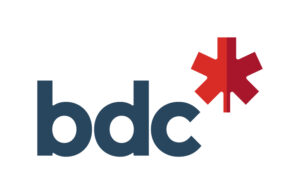Employee performance bonuses: How to use them effectively

A good bonus plan can help your business attract, retain and motivate employees. Bonuses are especially attractive for start-up businesses, because they are often only paid out if the business makes money.
Here are a few things to consider as you design effective performance bonuses.
Bonuses should be kept separate from pay and cost-of-living increases and tied directly to specific, measurable objectives that are linked to the company goals and to the employee’s contribution to these goals or the bottom line.
Serious problems with morale can arise if bonuses or other reward and recognition plans are not well thought out or are based on subjective criteria.
For example, let’s say you award a bonus to a staff member based on a supervisor’s subjective judgment of performance. That employee continues the same performance into the next year, but the supervisor wants to single someone else out with a bonus instead of last year’s star employee. The first employee may look on this as a disincentive.
Choose the right objectives
There are many ways to develop bonus plans. Creating a bonus pool and dispersing the funds based on clearly defined specifications may work well for project-based organizations. These organizations can also use milestone bonuses that kick in when predetermined goals are met.
Objectives should be determined using the SMART guidelines:
S: Specific—Define what is to be done, where, with whom and how.
M: Measurable—Outcomes should be measurable in terms of quantity, quality, cost, time, etc.
A: Achievable—Objectives should be realistic according to the skills and resources available to employees.
R: Relevant—Objectives need to be relevant to the individual’s specific job, department and your business objectives.
T: Time-bound—There should be clear time frames, milestones and deadlines.
Consider a profit-sharing plan
A profit-sharing plan can be effective for start-up companies that want their employees to focus on the long-term success of the business. That’s because their percentage of the bonus will depend on the company’s profits.
According to the Government of Canada’s Digest of Benefit Entitlement Principles, there are four major types of profit-sharing plans: Cash plans, employee profit sharing plans, deferred profit sharing plans and registered profit sharing pension plans.
In cash or bonus plans, employees receive their share of the profit at the end of the year. The bonus is taxed as employee income, even if the bonus takes the form of company stock.
All three other types of profit-sharing plans are placed in a trust fund where they accumulate interest. Depending on the type of plan, these funds may not be taxed as income and may only be withdrawn upon termination of employment or at retirement.
Be careful when setting up one of these plans. Profit-sharing will affect your company’s profits and value. It can also reduce your cash on hand, which could otherwise be invested in more growth or saved to prepare for unexpected events.
Review your plan regularly
There are other types of performance bonuses to consider. share grants and stock options are two types of bonuses that function as long-term incentives and might be worth considering.
Whatever incentive plan you do choose, make sure to review it regularly. Remember that it’s very hard to cut excessive compensation. And overpaying or underpaying employees can complicate your ability to hire new workers as you grow.
Also consider getting outside advice to help you grow your company and implement an HR strategy tailored to your business.




